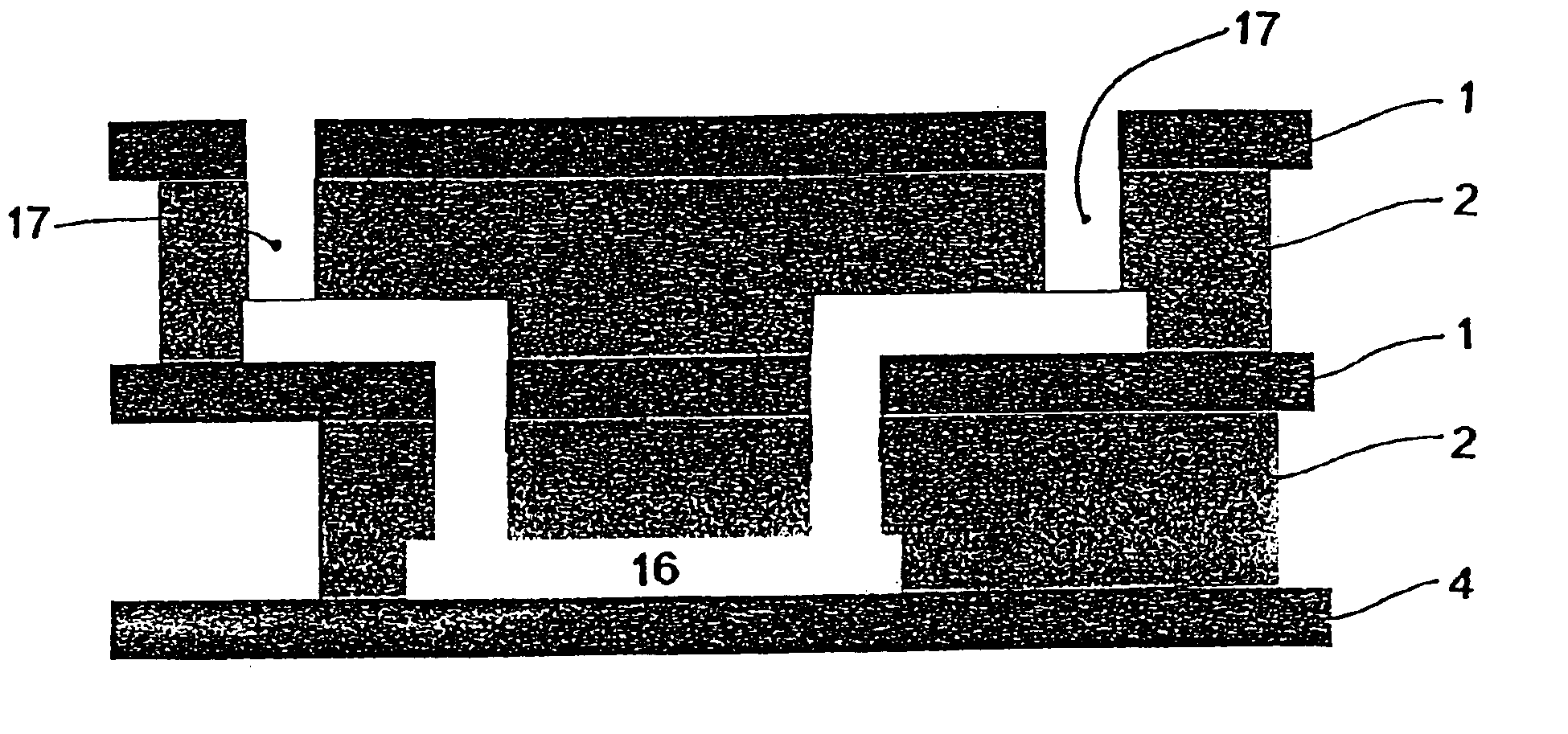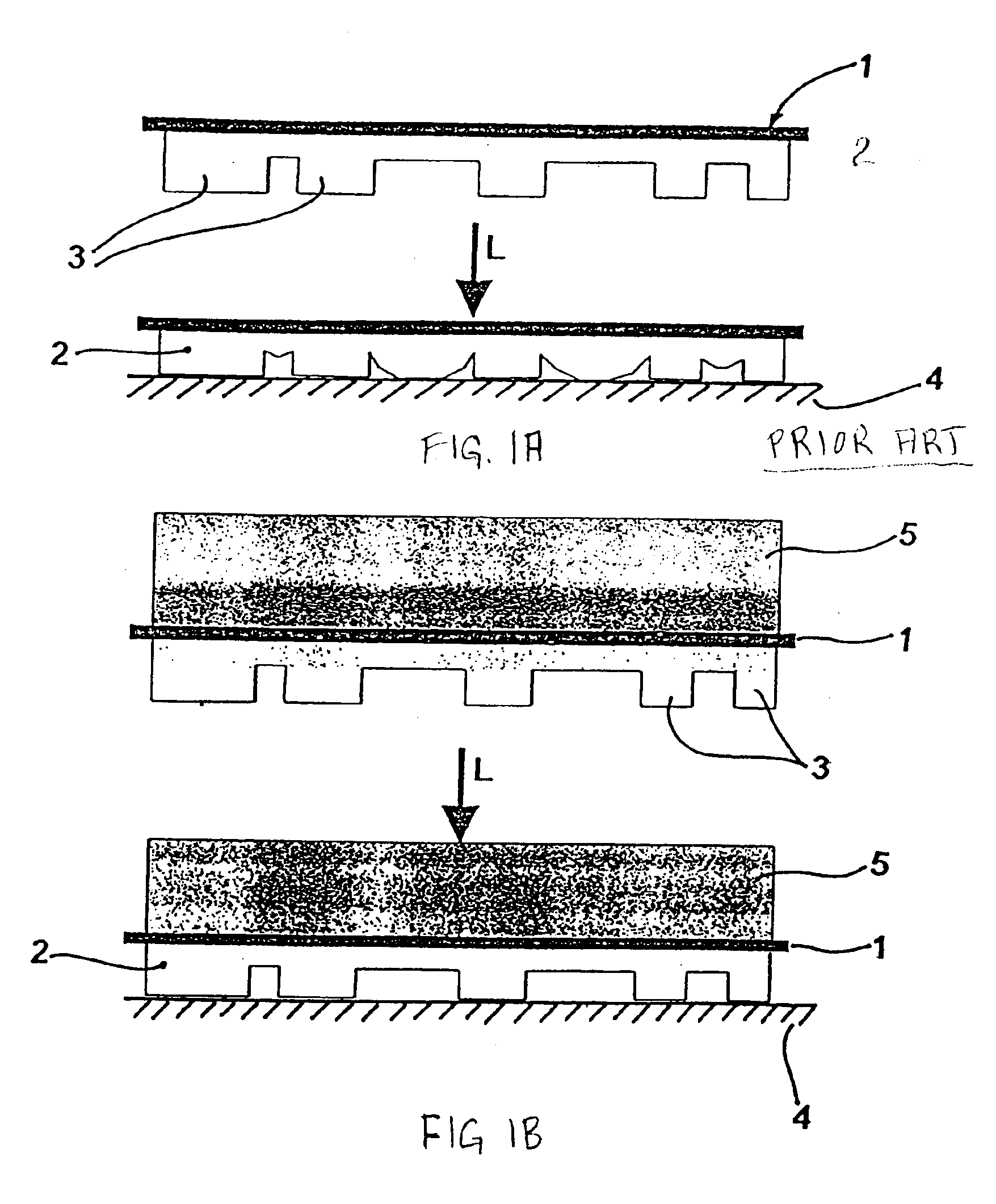Stamp device for printing a pattern on a surface of a substrate
a stamp device and substrate technology, applied in the field of stamp devices for printing patterns on substrate surfaces, can solve the problems of small thermal or mechanical expansion, inability to meet runout, defective and inaccurate stamping, etc., and achieve the effect of severely reducing the capability to compensate substrate topography and stamp thickness inhomogeneities
- Summary
- Abstract
- Description
- Claims
- Application Information
AI Technical Summary
Benefits of technology
Problems solved by technology
Method used
Image
Examples
Embodiment Construction
[0059]FIG. 1 shows a conventional stamp device having a backplane or in terms of this disclosure a carrier layer 1 typically made of a metal foil or a thin glass or quartz plate. On its one side a patterned layer 2 is applied having patterned structures 3 which are moistened at least on its lower side with an ink or a chemical or biological substance which shall be transferred to the surface of a substrate 4 by a printing process. While printing, the stamp device is pressed under a load L against the surface of a substrate 4 as illustrated in FIG. 1A lower sketch. Due to mechanical compression caused by uneven distribution of the load L onto the stamp, deformation appears and squeezes the pattern structures 3 and creates sagging in non supported regions.
[0060]When using a soft pattern 5 which is attached at the other side of the carrier layer 1 as it is shown in FIG. 1B no sagging appears under load. The soft layer 5 absorbs the deformation by distributing the load and leaves the pa...
PUM
| Property | Measurement | Unit |
|---|---|---|
| thickness | aaaaa | aaaaa |
| radius | aaaaa | aaaaa |
| friction coefficient | aaaaa | aaaaa |
Abstract
Description
Claims
Application Information
 Login to View More
Login to View More - R&D
- Intellectual Property
- Life Sciences
- Materials
- Tech Scout
- Unparalleled Data Quality
- Higher Quality Content
- 60% Fewer Hallucinations
Browse by: Latest US Patents, China's latest patents, Technical Efficacy Thesaurus, Application Domain, Technology Topic, Popular Technical Reports.
© 2025 PatSnap. All rights reserved.Legal|Privacy policy|Modern Slavery Act Transparency Statement|Sitemap|About US| Contact US: help@patsnap.com



